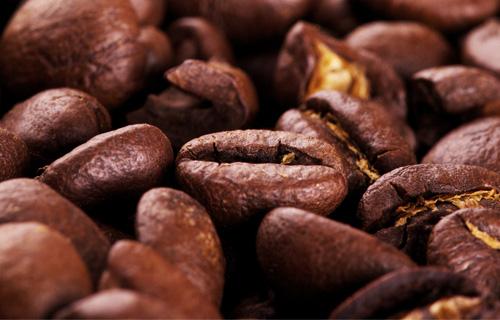Is Katim Coffee a small seed? Katim Coffee introduction
Follow the caf é (Wechat official account vdailycom) and found that Beautiful Cafe opened a small shop of its own.
Small seed coffee, belongs to Katim high generation variety, medium dwarf plant, vigorous growth, stable sub-characters, crown bud tender leaves emerald green, the whole plant leaf color dark green, plant-shaped columnar, short internodes, many branches, exuberant growth, wide adaptability, strong drought resistance, a certain degree of cold resistance, under the medium management level, the average dry bean yield is more than 200 kg.

3846 seeds per kilogram in cool sun for 2 months. There were about 5000 seeds in cool sun for 5 months, the germination rate was more than 95% in two months after seed production, 85% in three months, became weak after three months, and most seeds lost their germination rate after six months. The resistance to leaf rust is sub-immune type or extremely high resistance type, and its plant type is compact, which has a certain inhibitory effect on longicorn beetles, which often spawn in the bare parts of branches, with high yield, no prominent phenomenon in size and year, and excellent quality. This variety has been the main variety in coffee production since it was planted.
Katim CIFC7963 (F6) is widely popularized and planted in Dehong, Baoshan, Pu'er, Xishuangbanna, Lincang, Wenshan, Yuxi and other coffee growing areas in Yunnan Province, as well as Panzhihua in Sichuan Province and neighboring Myanmar, with a total promotion area of more than 200,000 mu.
The annual mean temperature is 19-21 ℃ years, the accumulated temperature of annual ≥ 10 ℃ is more than 6800 ℃, the coldest monthly mean temperature is more than 11.5 ℃, the absolute lowest temperature is above 1 ℃, the coldest monthly mean temperature is ≥ 11.5 ℃, the monthly mean temperature of ≤ 13 ℃ is more than two months, the extremely lowest general year is more than 0 ℃, and some years appear areas of-1 ℃ or short-2 ℃. Below 1200 meters above sea level, the annual rainfall is ≥ 1100 mm; the soil should be fertile loam, loose soil, good drainage, PH value of 66.5, slope less than 25 °gentle slope land, platform planting.
Catimor: an important variety of commercial beans at present. East Timor was colonized by Portugal for 400 years, and the Portuguese had long been in contact with East Timorese coffee trees. In 1959, the Portuguese moved the Brazilian bourbon mutant Kadura to East Timor and interbred with Tim, who was of Robusta origin, and succeeded in breeding Kadim with strong disease resistance and super production capacity. During the period from 1977 ○ to 1999 ○, leaf rust affected coffee producing countries around the world. With the assistance of international organizations, various producing countries vigorously promoted Kadim to fight leaf rust and increase production capacity. However, although Katim inherited the advantages of Robusta's strong disease resistance, but also inherited the gene of poor flavor, in addition, although the early Katim had a large production capacity, it needed shade trees to serve, otherwise it was easy to wither, which can be said to be strong and dry. Over the decades, many botanists have studied the improvement of Kadim varieties, and dozens of new varieties have been cultivated. Colombia is the biggest harvester. In 1982, Kadim, which can be planted in the sun, was cultivated and named after the country "Colombia." Costa Rica claims that unlike ordinary kadim, [Colombia], which has been interbred for many generations, is now the two main varieties in the country with Kaddura, which has long replaced Tibica, which is weak, sickly and with low yield. However, most of the winners of Costa Rican [COE] are Kaddura, and [Colombia], who is of Robusta descent, rarely wins the prize. A large number of [Supermo] commercial beans exported by Costa Rica should be lower altitude [Colombia] or Kaddura, rather than the traditional Tibica, which is the main reason why the flavor of [Supermo] is getting poorer and poorer, but it is impossible for Costa Rica to reproduce the less productive Tibica.
In order to improve the poor evaluation of the Catimor Cartim Cup, in recent years botanists from all over the world have turned to the interbreeding of Arabica and Katim for many generations, in an attempt to reduce the Robusta pedigree and improve the elegant flavor of Arabica, thus cultivating a new generation of Katim, including [CatimorH528], [CatimorH306], and [CatimorT5175] and [CatimorT8667] of Costa Rica. But Costa Rica has abandoned the cultivation of Kadim, focusing on Kaddura varieties, and exporting the improved Kadim to Asian countries. There are countless Katim strains, and the cup test results and habits of each strain are also different, but although it has been improved for many years, Katim has not yet entered the top 30 list of the International Cup. Kadim's biggest fatal injury is that it is not inferior to Kaddura, Kaduai or bourbon beans grown at low altitude, but the cup test results planted at high altitude are significantly lower than those of bourbon, Kaduai or Kaddura. It remains to be seen whether Kadim can ascend to the Hall of Great elegance. Looking forward to one day to cultivate a super Kadim suitable for high altitude, shocked the boutique coffee industry.
Important Notice :
前街咖啡 FrontStreet Coffee has moved to new addredd:
FrontStreet Coffee Address: 315,Donghua East Road,GuangZhou
Tel:020 38364473
- Prev

Introduction to the history of Salvadoran coffee, Salvadoran coffee taste
Following caf é comments (official Wechat account vdailycom) found that Beautiful Cafe opened a small shop of its own. Saguo still uses the most traditional shade tree planting method, which has a positive effect on the aroma of coffee. In the fifth year of the second OO, Pacamara, a native hybrid of Saudi Arabia, showed his skill in an extraordinary cup, which confused the surveyors of the International Cup, and did not know how to score the unfathomable Pacamara.
- Next

Brief introduction of Colombian Huilan Coffee producing area description of flavor and taste of Colombian Huilan hand chong
Following Cafe Review (Wechat official account vdailycom) found that Columbia Coffee is one of the few original coffee sold in the world under the name of the country. In terms of quality, it has won praise unmatched by other coffee. The country is the world's largest exporter of Arabica coffee beans.
Related
- Detailed explanation of Jadeite planting Land in Panamanian Jadeite Manor introduction to the grading system of Jadeite competitive bidding, Red bid, Green bid and Rose Summer
- Story of Coffee planting in Brenka region of Costa Rica Stonehenge Manor anaerobic heavy honey treatment of flavor mouth
- What's on the barrel of Blue Mountain Coffee beans?
- Can American coffee also pull flowers? How to use hot American style to pull out a good-looking pattern?
- Can you make a cold extract with coffee beans? What is the right proportion for cold-extracted coffee formula?
- Indonesian PWN Gold Mandrine Coffee Origin Features Flavor How to Chong? Mandolin coffee is American.
- A brief introduction to the flavor characteristics of Brazilian yellow bourbon coffee beans
- What is the effect of different water quality on the flavor of cold-extracted coffee? What kind of water is best for brewing coffee?
- Why do you think of Rose Summer whenever you mention Panamanian coffee?
- Introduction to the characteristics of authentic blue mountain coffee bean producing areas? What is the CIB Coffee Authority in Jamaica?

